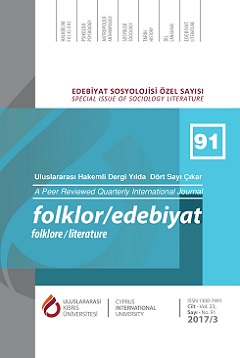Jose Saramago’dan Elif Şafak’a Filin Anlatisal Yolculuğu
The Narrative Journey of Elephant from Jose Saramago to Elif Şafak
Author(s): Kadir Can DilberSubject(s): Novel, Philosophy of Language, Hermeneutics, Theory of Literature
Published by: Uluslararası Kıbrıs Üniversitesi
Keywords: elephant; story; discourse; comparison; narrative;
Summary/Abstract: Evaluations about comparison of literary texts usually relate to the author’s concern of being influenced and the reader’s point of view. Although there is no theoretical restriction about deep textual comparison, there is not a certain method whose validity is accepted. However, if the literary genre is novel, evaluation is generally focused on the plot. Considering Kristeva’s words, “Every text is formed as a mosaic of quotations,” it is seen that plot and discourse are realized in a frame of the concern of influence. In transferring story forms, this concern is either carried to a further degree or restricted to certain limitations. In this regard, the map of story and discourse structured by Seymour Chatman is important in the comparison of literary texts. When we evaluate the story and discourse forms first in terms of their existence and characters and then in temporal terms, the adventure of the text’s construction is revealed. In this study, the narrative journey of elephant in the examples of Mark Twain’s “White Elephant” and of the novels of Jose Saramago’s “The Elephant’s Journey” and Elif Şafak’s “Ustam ve Ben”.
Journal: Folklor/Edebiyat
- Issue Year: 23/2017
- Issue No: 91
- Page Range: 251-263
- Page Count: 13
- Language: Turkish

